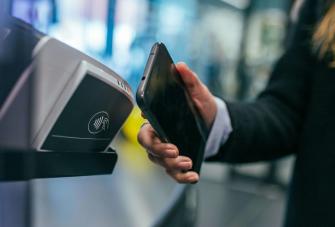What is POS security? Secure Your Point Of Sale With These Tips
Did you know that according to a recent IBM report, the global average cost of a data breach is $4.45 million, an increase of 15% over 3 years? That's a significant financial impact that highlights the critical need for robust security measures.
Your point-of-sale (POS) system is like the heart of your business, handling transactions, storing customer data, and keeping everything running smoothly. But just as you lock up your store at night and turn on your security cameras, your POS system needs protection too.
So, we're going to talk about how to keep your POS system safe from data breaches, hackers, and unauthorised access. Whether you're processing payments, managing inventory, or tracking sales, prioritising POS system security is key to maintaining customer trust and safeguarding your business.
In this blog, we'll break down the ins and outs of POS security, share best practices, and give you practical tips to secure your POS system effectively. So, if you're ready to protect your business and customer data, let's get started!
How POS security works
So, how does point of sale security keep your transactions safe? Well, POS system security operates on multiple layers to maximise safe transactions and sensitive POS data. Here's a breakdown of how it works:
- Encryption of data: When a customer makes a purchase, their payment information is encrypted. This means that the POS data is converted into a secure code that can only be decoded by authorised parties, like your payment processor or bank. Encryption prevents hackers from intercepting and reading sensitive information during transmission.
- Secure authentication methods: To access the POS system, users must authenticate themselves through secure methods such as passwords, biometrics, or two-factor authentication (2FA). These authentication measures verify the identity of users and prevent unauthorised access to the system.
- Monitoring and logging: POS systems often have monitoring and logging features that track transactions, user activity, and system access. This helps detect any suspicious behaviour or anomalies that could indicate a security breach. Monitoring and logging allow businesses to take prompt action in response to potential threats.
- End-to-end encryption: Many modern POS systems utilise end-to-end encryption (E2EE) for payment processing. E2EE ensures that sensitive data remains encrypted throughout the entire transaction process, from the moment the card is swiped or tapped to when the payment is processed by the payment gateway.
- POS security policies: Implementing strict security policies within your POS system is crucial. This includes regular POS software updates to patch vulnerabilities, setting up firewalls and antivirus software, and establishing access controls to limit who can interact with the POS system and what actions they can perform.
By combining these layers of security measures, POS systems can effectively protect customer data, prevent unauthorised access, and ensure safe transactions. However, it's essential for businesses to stay vigilant and regularly review and update their security protocols to adapt to evolving threats.
Examples of data breaches due to lack of POS security
Data breaches from POS systems can have serious repercussions, exposing sensitive customer data and information and damaging business reputations. Here is a notable example from the past that highlights just how harsh the consequences of inadequate POS security measures can be:
The Target data breach of 2013 stands out as one of the largest and most impactful data breaches in the history of the United States. In December of that year, cybercriminals managed to steal credit card numbers from nearly 40 million customers across 2000 Target stores nationwide. This breach occurred by accessing data stored on Point of Sale (POS) systems, which are the systems where customers make payments for products or services at stores.
The scope of the breach expanded when, on January 10, 2014, Target revealed that Personally Identifiable Information (PII) data of up to 70 million customers had also been compromised. This included sensitive information such as names, phone numbers, addresses, and email addresses. Shockingly, there was an overlap of 12 million individuals between the two sets of stolen data, bringing the total number of affected individuals to around 98 million. It's estimated that approximately 11 GB of data was stolen in total.
The stolen customer data didn't stay hidden. Nope! It appeared for sale on online black-market forums known as "card shops." This incident drew significant attention from regulatory bodies. The U.S Senate Committee on Commerce conducted an investigation and concluded in March 2014 that Target had missed several opportunities to prevent the breach, leading to severe consequences.
The financial impact was substantial for Target, with management reporting a cost of over $61 million due to the breach. This incident serves as a stark reminder of the critical importance of robust cybersecurity measures, especially concerning POS systems, to protect customer data and prevent such catastrophic breaches in the future.
Common security threats in a POS device
When you're using a Point of Sale (POS) device, it's important to watch out for security issues. These are the main things that can cause problems:
- Malware attacks: Malicious software can infect POS systems, stealing payment information or disrupting operations. Regular malware scans and software updates are crucial defences.
- Data breaches: Hackers target POS systems to steal customer data such as credit card numbers. Strong encryption and secure networks help prevent unauthorised access.
- Phishing scams: Fraudulent emails or messages may trick employees into divulging login credentials or installing harmful software. Educating staff about phishing and implementing email filters can reduce this risk.
- Weak passwords: Default or easily guessable passwords make POS devices vulnerable. Using strong, unique passwords and changing them regularly enhances security.
- Physical tampering: Criminals may physically tamper with POS terminals to install skimming devices or compromise hardware. Secure installations and regular inspections can detect and prevent such attacks.
Everything in one package
Our EPOS system enables you to adapt, gain new customers, increase profit and remain future-proof.
WAS £899, NOW FROM £225*
Measures to protect your POS device from attacks
By now we've established that your POS device is the lifeline of your business transactions. Here are some practical steps to ensure its security:
Secure POS transactions to avoid data breaches
Every transaction is a potential entry point for cyber threats. Here's how to protect your POS system and protect your business:
- Encryption: Make sure all transactions are encrypted from end to end. This means turning sensitive data into unreadable code that only authorised parties can decipher.
- Tokenization: Consider using tokenization to replace sensitive payment data with unique tokens. This adds an extra layer of security and reduces the risk of data exposure during transactions.
- EMV chip technology: Encourage the use of EMV chip technology for card transactions. These chips provide enhanced security compared to traditional magnetic stripe cards, making it harder for fraudsters to steal card information.
By prioritising these measures, you can significantly reduce the risk of data breaches during POS transactions and safeguard your business and customers' sensitive information.
Importance of POS software updates and antivirus systems
You may have your POS software installed, but keeping it and your antivirus systems updated is extremely important for maintaining the security of your business operations. Here's why these measures are so important:
- Regular software updates: Just like your phone or computer, your POS software needs regular updates to stay secure. These updates often include important security patches that fix vulnerabilities and protect against new threats. By keeping your software up to date, you can minimise the risk of cyberattacks and data breaches that could compromise sensitive customer information.
- Antivirus protection: Installing reputable antivirus software on your POS device adds an extra layer of defence against POS malware, viruses, and other malicious threats. Antivirus programs actively scan for and remove any suspicious activity, helping to keep your system and data safe from cybercriminals looking to exploit vulnerabilities.
- Compatibility check: It's essential to ensure that your POS software updates are compatible with your hardware and other systems. Compatibility issues can create vulnerabilities that hackers may exploit to gain unauthorised access or compromise transaction data security.
Extensive POS security training for your employees
Empowering your employees with extensive POS security training is essential in mitigating risks associated with human error and unauthorised access. Here's why investing in employee training is key:
- Mitigating human error: Humans make mistakes. So it's completely understandable that human error is a common reason why many security breaches happen. Comprehensive training educates employees about best practices for handling sensitive customer data, reducing the likelihood of accidental data exposure or mishandling and creating safeguards for when they inevitably occur.
- Preventing unauthorised access: Proper training helps your employees understand the importance of access control and authentication measures. This includes using strong passwords, implementing two-factor authentication, and recognizing and reporting suspicious activity that could indicate an attempt to gain unauthorised access to the POS system.
- Data collection practices: Training sessions should also cover proper data collection practices, emphasising the importance of obtaining and storing customer data securely and in compliance with data protection regulations. This includes educating employees on data encryption, secure payment processing, and data retention policies.
Restrict / Limit access to your POS system within your workforce
Controlling who can access your POS system is like locking the doors to your business – it keeps things secure and prevents unwanted entry. Here's why it's crucial to restrict and limit access and how you can do it:
- Role-based access: Think of it like giving keys to specific rooms. Each employee gets access only to the areas they need for their job. This way, sensitive information stays safe, and only authorised personnel can access it in order to carry out their duties.
- User authentication: It's like having a secret code or fingerprint to unlock a door. Require strong authentication methods, like passwords or biometrics, to make sure only the right people can get into your POS system.
- Audit trails: Imagine having a security camera that records who comes in and what they do. Maintaining audit trails lets you keep an eye on who accesses the system, what they do, and when, helping you spot any unusual activity.
- Regular access reviews: Just like you check your locks regularly, review who has access to your POS system. Make sure permissions match employees' roles, and remove access for those who no longer need it. This keeps your system secure and reduces the risk of unauthorised access.
Final thoughts
In today's digital age, where data breaches and cyber threats are on the rise, prioritising POS security is paramount for businesses, especially those in retail and hospitality. Let's recap the key takeaways from our discussion on POS security:
- The global average cost of a data breach is a staggering $4.45 million, highlighting the financial impact of inadequate security measures.
- Your POS system is the heart of your business, handling transactions and storing sensitive customer data. Just as you secure your physical store, your POS system needs protection too.
- Implementing robust POS security measures involves securing transactions, updating software, providing extensive training to employees, and controlling access to the system within your workforce.
- Examples of data breaches, like the Target breach in 2013, emphasise the severe consequences of inadequate POS security, including financial losses, reputation damage, and operational disruptions.
- Businesses should care about POS security to protect customer data, prevent financial losses, mitigate reputational risks, comply with transaction data protection standards, and maintain customer trust.
By following best practices, such as encrypting transactions, updating software, providing training, and restricting access, businesses can enhance their POS security and safeguarding their operations and customer data. Remember, investing in POS security isn't just about protecting your business—it's about protecting your customers and maintaining trust in an increasingly digital world.
Liked this blog? Check out our blogs on What is a Point of Sale Transaction? and What is POS software for more insights into optimising your POS system and ensuring secure transactions. Learn how to streamline your business operations and enhance customer experiences with Epos Now's innovative solutions.




